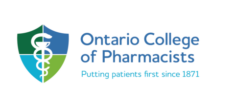4 Ways Pharmacy Assessments Protect You

SPONSORED CONTENT
As consumers, we rely on a variety of authorities to protect our health and safety. We wouldn’t fly if we knew the airplane hadn’t been inspected and we wouldn’t go out to dinner at a restaurant if we knew the kitchen didn’t meet health and safety criteria. We can step into planes and restaurants with peace of mind because we know they’ve met strict standards.
This is also true with Ontario’s pharmacies.
The College oversees approximately 17,000 pharmacists and another 5,000 pharmacy technicians. As a regulator, the College only grants the right to practice to pharmacy professionals who have met extensive education and training requirements.
While the College licenses these professionals, it also protects you, as a member of the public, by closely reviewing the pharmacy’s operations. That includes about 4,600 community pharmacies located in neighbourhoods across Ontario, and more than 235 hospital pharmacies.
College advisors visit these pharmacies to assess them and ensure they have met the criteria to be accredited, which is a requirement to operate in the province.
These assessments protect you in four main ways:
- Upholding standards: College advisors review operations to ensure the pharmacy meets standards and legislation, and uses proper processes and procedures. These cover everything from policies and procedures around safe storage of medication, to how drugs are labelled, to how the pharmacist ensures you are taking your medication properly, to communication between pharmacy professionals and patients.
- Guiding improvements: In most cases, College advisors don’t find serious issues. However, advisors can have pharmacies create an action plan to improve in certain areas, or order a re-assessment if there’s anything that requires a follow up. If there are more serious concerns, these may be brought before the College’s Accreditation Committee.
- Checking in regularly: Assessments happen at about once every one to four years for community pharmacies, and at least once every two years for hospital pharmacies. The frequency is higher depending on the activities performed within these pharmacies.
- Setting conditions to open: Beyond their routine assessments, College advisors visit and evaluate community pharmacies whenever one opens, changes ownership or changes location. This must happen before opening day. Pharmacies may also require an assessment after a significant renovation.
Pharmacy assessments focus on the operational processes that have the greatest impact on the safety and quality of patient care, and health outcomes.
The criteria used to assess pharmacies are available on the College’s website, and information about a pharmacy’s assessment, including the date, type, reason and outcome, is available using the Find a Pharmacy or Pharmacy Professional tool.
Assessing pharmacies, and licensing the people who work within them, aren’t the only ways the College serves and protects you. The College also:
- Sets and enforces rules (standards, policies, guidelines, Code of Ethics) that pharmacy professionals must follow.
- Requires all pharmacy professionals to learn and build upon their skills over time.
- Coaches pharmacists and pharmacy technicians (on things such as decision-making and communicating with patients) via individual assessments.
- Enables patients to look up a pharmacy or pharmacy professional to make informed choices about who they would like to provide care to them or their loved ones using the Find a Pharmacy or Pharmacy Professional tool on the College website.
- Investigates and addresses concerns about pharmacy care.
Together, the College’s activities help ensure that pharmacy care is delivered at the highest standards, in the best interests of the public.
For more information about the role of the Ontario College of Pharmacists, please visit www.ocpinfo.com.
